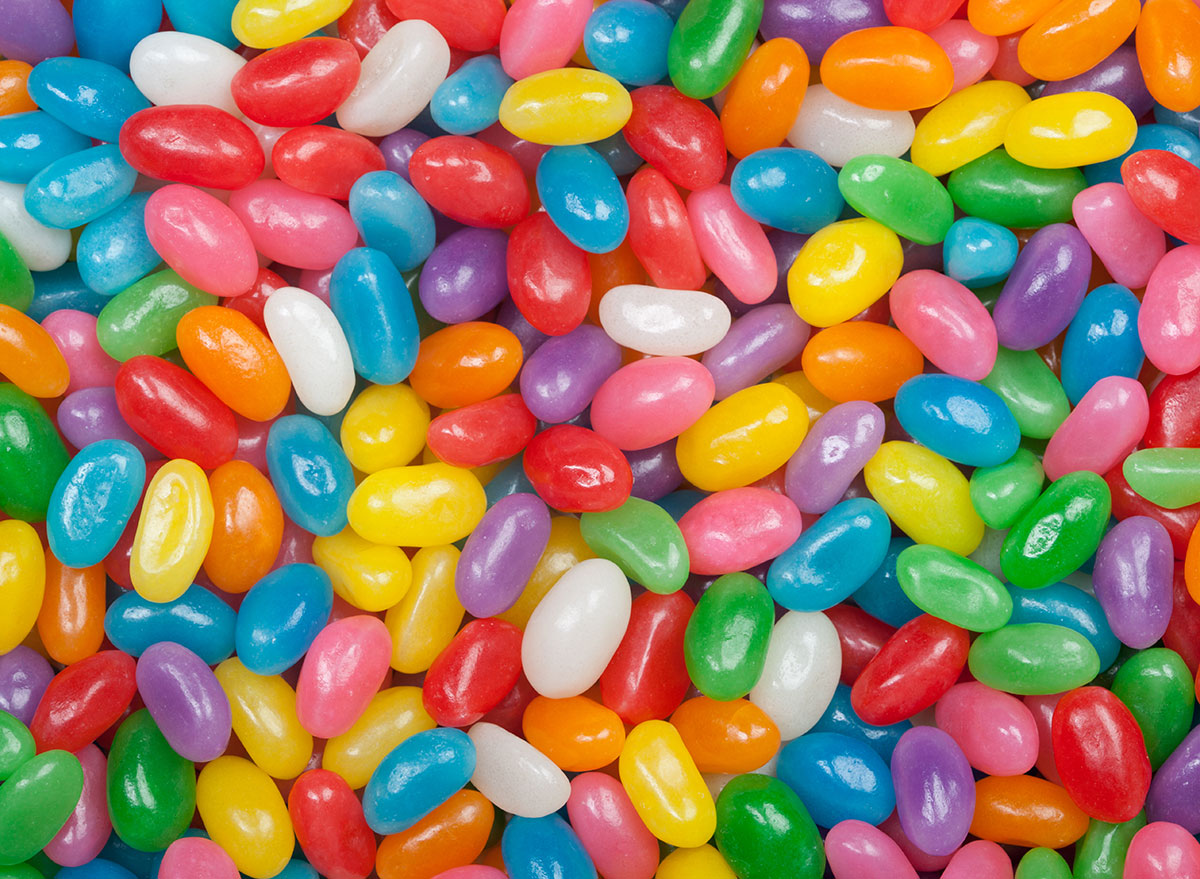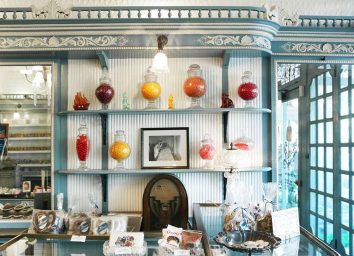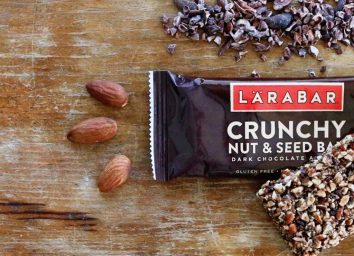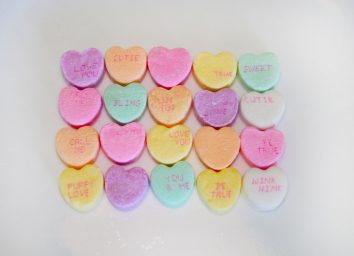How Jelly Beans Are Made Might Make You Love The Candy Even More

Jelly beans might be an Easter candy basket staple, but we think they taste just as good any time of year. But have you ever thought about what goes into making them? It turns out that each tiny bean takes a week to produce—at the minimum. The process includes everything from pouring the candy mixture into molds to sending the beans through a “sugar shower.”
Read on to find out more about jelly beans, including when they first appeared on the candy scene and what exactly goes on inside the most famous factory where they’re made.
When were jelly beans invented?
The exact origin of jelly beans is unknown, but it’s commonly accepted that they’re the love child of two even older sweet treats, Turkish Delight and Jordan almonds. No, there aren’t nuts in the middle of your jelly beans, but you can thank the treat for that signature crunchy coating. The Turkish Delight, meanwhile, factors in with the beans’ signature chewy filling. It’s a bit of a mystery who first combined the two textures to create the waxy jelly bean, but jelly beans have been on the scene since at least the 19th century.
Even Jelly Belly, the most well-known maker of the sugary treat, states on its website that the candy’s official origins are “lost in time.” But the brand does have some insight into how the candies came to be bean-shaped.
Long before embracing the now-iconic shape, Jelly Belly sold sweet candies shaped like nuts, vegetables, and even animals, the company explains on its site. Beans were a prominent staple in the 19th-century American diet, Jelly Belly notes. And the shape evidently stuck more than the other jelly shape options did. (After all, it’s not exactly fun to say you’re eating a handful of jelly carrots or jelly turnips.)
Jelly beans had caught on in a big way in the United States by the early 20th century. They became an Easter staple by the 1930s, as enterprising confectioners realized they resembled brightly colored eggs almost as much as beans. In fact, Brach’s calls some of its jelly beans “jelly bird eggs.”
What goes on inside a jelly bean factory?
Jelly beans are a satisfying treat because of their crisp shells and chewy centers. But combining two nearly opposite textures into one tiny piece of candy means that the process of making a single jelly bean is downright complicated. Believe it or not, the process takes anywhere from one to two weeks from start to finish.
Business Insider went inside the Jelly Belly factory for a fun video, in which Jelly Belly CEO Lisa Rowland Brasher explained her company’s intricate candy making process. Brasher’s great-great-great grandfather, Gustav Goelitz, first began selling handmade candies in 1869, so she knows a thing or two about the sweet treats. Ahead are a few highlights from the inside look at the candy factory.
Sweet beginnings
The first step in creating a jelly bean is combining cornstarch, corn syrup, sugar, and water. Once the mixture is hot, flavor-specific additives—anything from fruit juices and purees to peanut butter and oils—are poured in.
The candy mixture then goes through a mogul, a machine that adds the mixture into wooden molds lined with cornstarch. The molds create individual bean shapes before the beans sit in a warm room overnight.
Sugar and spice
After the beans’ gel process, they move on to a conveyor belt. That’s where they head for, believe it or not, a steam bath, followed by a quick “sugar shower,” Business Insider explains.
“It’s kinda like a spa—a jelly bean spa, you know? Steam bath, sugar shower,” Brasher told the Today show.
Next, Jelly Belly’s candy-makers pour just the right amount of colored syrups—and more sugar—onto the jelly beans as they tumble around in large circular mixers. And after they’ve set, the beans get a coat of glaze and some beeswax for shine.
A whole world of flavors
Jelly Belly, which has more than 100 jelly bean varieties at the time of this story, uses a completely different recipe for each one.
And for Jelly Belly’s flavor creators, inspiration can come from anywhere. Jelly Belly created its own take on Bertie Bott’s Every Flavour Beans—think unusual tastes like booger and dirt—as a nod to the wildly popular Harry Potter books. The company even created a blueberry-flavored bean ahead of Ronald Reagan’s 1981 presidential inauguration, because he loved jelly beans. (The blue flavor allowed the company to send him a patriotic red, white, and blue assortment.) The candymaker also sells jelly bean packages inspired by Toy Story 4 and emojis, so the possibilities are endless.
Now that you know how much care goes into making jelly beans, you might enjoy this sweet treat that much more. Who knew something so small and simple as a jelly bean would have to go through such a process?








